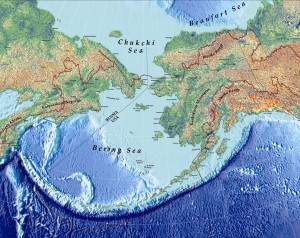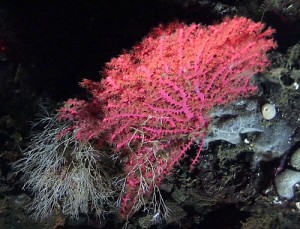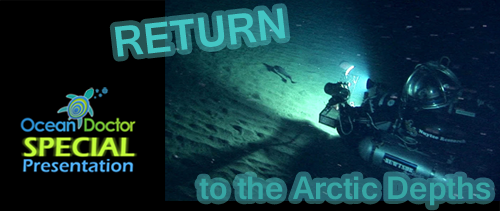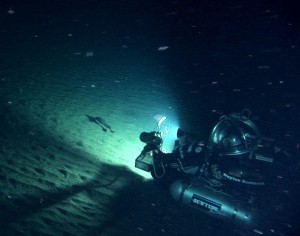
In 2007, Greenpeace launched a groundbreaking expedition to explore the two largest underwater canyons in the world, in the heart of the Bering Sea. It was the first time manned submersibles ever entered these canyons and human eyes gazed directly upon their treasures. The expedition revealed an extraordinary tapestry of life thousands of feet below the surface, including beautiful, brightly-colored deepwater corals, sponges, anemones, octopus and fish and resulted the discovery of new species and species ranges.
The expedition also revealed the terrible damage being done to these intricate ecosystems by trawling nets, even more than 1,000 feet below the surface. Coldwater corals are the oldest living animals on the planet, some of which are roughly 4,000 years old and still alive today. But what may take decades, centuries or millenia to grow can be wiped out in the blink of an eye by a factory trawler net.

In 2007 Greenpeace explored the two largest underwater canyons in the world, both of which are in the Bering Sea. In 2012, Greenpeace returned to the Bering Sea and is also exploring the Chukchi sea
Five years later, Greenpeace returned to the Bering Sea and also explored the Chukchi Sea with submersibles. This time, concern for these rich coralline ecosystems is not just about fishing. Royal Dutch Shell is making preparations to drill for oil in the Chukchi Sea, and already Greenpeace researchers have revealed rich coral beds in the area in which Shell intends to drill. (See Greenpeace finds deep-sea corals on Shell’s Arctic drill site – Washington Post.)

The sublimely pink deepwater coral, Swiftia pacifica photographed at 1,000 feet below the Bering Sea (Photo: D. Guggenheim)
Ocean Doctor president, Dr. David E. Guggenheim served as a sub pilot and scientific consultant during the 2007 expedition. In 2012, Ocean Doctor compiled and published a special page to commemorate the five year anniversary of the 2007 expedition: Return to Arctic Depths.
Greenpeace refers to the Bering Sea as “one of the wildest regions in the world.” It supplies fully half the seafood caught in the United States. It’s huge — more than 770,000 square miles — and stretches between Alaska and Russia. But its bounty is not unlimited and the impacts of fishing — especially trawling — can be devastating.
Ocean Doctor is proud to be part of a coalition of environmental organizations dedicated to protecting the Bering Sea Canyons.

| Learn More |
 |
|
Ocean Doctor Special Presentation: Return to the Arctic Depths |
| BeringSeaCanyons.org |


Leave a Reply
Want to join the discussion?Feel free to contribute!